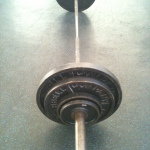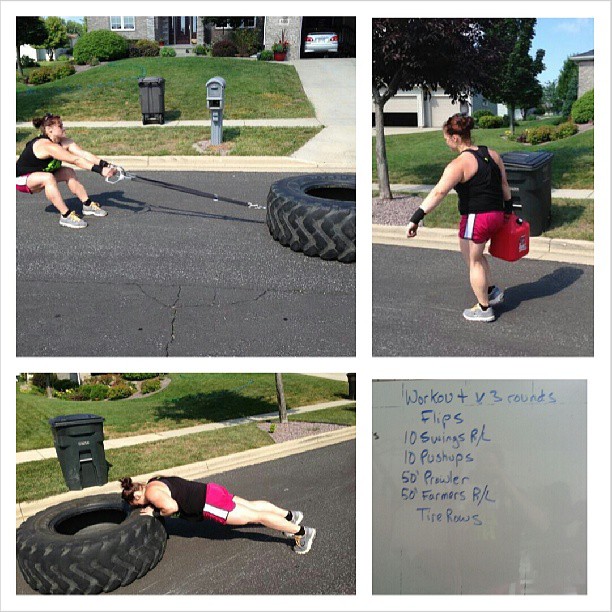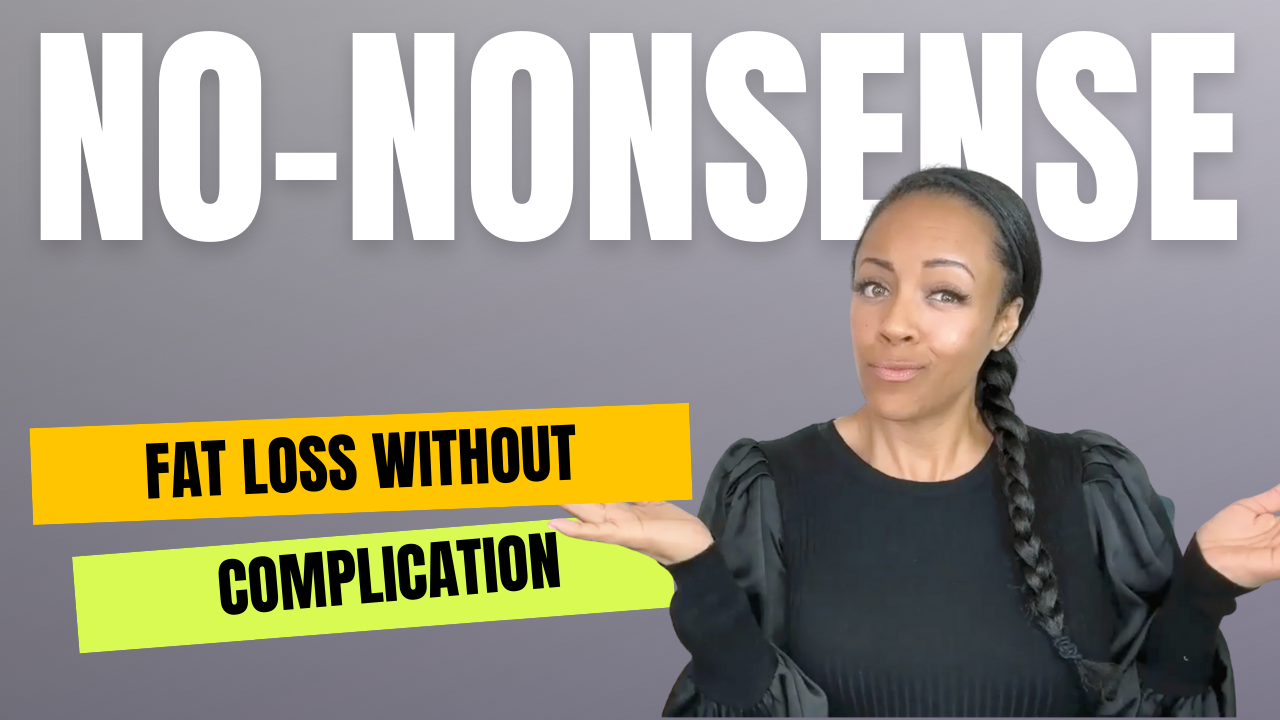 With the ever-increasing popularity of intense workout programs like CrossFit, metabolic conditioning, or metabolic resistance training (MRT) seems to be a fitness trend that’s here to stay.
With the ever-increasing popularity of intense workout programs like CrossFit, metabolic conditioning, or metabolic resistance training (MRT) seems to be a fitness trend that’s here to stay.
These workouts tend to be intense, impressive, and very cool-looking. Typically, they have the added benefit of giving you a goal to work towards (beat the clock!). Who doesn’t want to flip a big heavy tire, beat things with hammers, and carry around heavy weighted objects as fast as possible?
If you’ve done your part, by the end of the workout, you’re exhausted, sweating from head to toe, and sprawled out on the ground, hoping someone will bring you a protein shake (or maybe a gallon of Ben and Jerry’s…).
Obviously you’ve just had a great strength training workout, right?
Not necessarily.
What is Metabolic Resistance Training?
It can be confusing to understand exactly what this term means since this term is thrown around pretty haphazardly in the fitness world. It is not just a bunch of random exercises done as quickly as possible.
Simply put, Metabolic Resistance Training is a form of metabolic conditioning. The purpose of metabolic conditioning is to increase the efficiency of one of the three pathways used in exercise metabolism. Metabolic conditioning has the added benefit of conditioning the muscles to better use to fuel delivered to them. Ultimately, this should result in a better capacity to burn fat.
Metabolic conditioning can be a great tool if your goal is fat loss. Not only does metabolic conditioning burn tons of calories during a workout, it also increases caloric burn in the 24-48 hours after your workout. This is due to excessive post-exercise oxygen consumption (EPOC). There are various different types of work to rest periods intended to increase EPOC.
Energy Systems – The Goal of MRT
Creatine Phosphate Pathway: Also referred to as the Immediate Pathway, this energy system is responsible for providing short (less than 10 seconds) bursts of energy. This is the energy pathway utilized when performing quick power exercises like Olympic or powerlifting-style lifts or sprinting. It takes this energy system about three to five minutes to recover to its fullest potential.
Glycolytic Pathway: Also referred to as the Intermediate Pathway, this energy system provides the energy required for short, intense activities lasting one to four minutes. If you are completing high-intensity cardio intervals or doing multiple reps of a particular exercise, this is the pathway being utilized. It takes this energy system about 1-3 minutes to fully recover.
Aerobic Pathway: Also referred to as the Long-Duration Pathway, this metabolic pathway provides the energy required for longer-duration exercises of moderate-intensity work. This energy system can provide energy for hours of activity, since it has a limitless reserve (fat) to draw upon.
It is important to remember that regardless of the activity performed, there is always some crossover between energy systems.
Is MRT the Same as Strength Training?
MRT typically involves weighted objects such as tires, battle ropes, farmer’s walks, sandbags, and kettlebells. These weighted objects are lifted in rapid succession, and the intensity is kept very high.
However, it is important to remember that the main goal of these workouts is not to maximize strength and to build muscle. The main goal of these workouts is to better utilize energy stored in the body. The primary goal of these workouts is more maintaining strength levels than gaining strength and adding muscle mass.
It’s key to remember that metabolic conditioning is not meant to be a haphazard, random bunch of exercises thrown together with the goal of burning a bazillion calories. These types of workouts are an advanced technique. So advanced in fact, that they are what many elite athletes turn to when they have reached their potential and are simply trying to maintain their current level of fitness. For the average recreational exerciser, it is important to complete these workouts under the supervision of a skilled trainer or strength coach.
The bottom line? You should view MRT workouts as a highly effective form of cardio, along the same lines as HIIT, meant to burn fat. These workouts are not intended to replace conventional strength training.
Is MRT right for you?
MRT can be a fantastic tool in your fat loss arsenal, provided that all other key elements are on pointe.
 Alwyn Cosgrove, author of the best-selling series New Rules of Lifting, who has a great reputation for results-driven fitness, has come up with a Hierarchy of Fat Loss that can serve as a great checklist to go through when evaluating whether and how new training philosophies will help you reach your goals. You should think about approaching the following elements in order. As long as you are achieving the results you desire, even if progress is slow, there is no reason to add elements further down the list. Stay patient and trust the process!
Alwyn Cosgrove, author of the best-selling series New Rules of Lifting, who has a great reputation for results-driven fitness, has come up with a Hierarchy of Fat Loss that can serve as a great checklist to go through when evaluating whether and how new training philosophies will help you reach your goals. You should think about approaching the following elements in order. As long as you are achieving the results you desire, even if progress is slow, there is no reason to add elements further down the list. Stay patient and trust the process!
1. Nutrition If your ultimate goal is to lose fat and increase lean muscle mass, start with nutrition. Keep it simple, and don’t overthink things. Your first step is to make sure that you are eating enough calories to support a healthy metabolism and maintain your lean muscle mass while you are losing fat. The more muscle you have, the higher your metabolism, so don’t sacrifice your lean mass for a smaller number on the scale! After you have made sure that you are taking in a sufficient amount of calories, look at your protein. A great goal is to take in approximately 1 gram of protein per pound of body weight. Take in plenty of healthy fats, and round everything out with some carbohydrates.
2. Nutrition Yes, it’s that important! Until you get your nutrition on pointe, there’s no point in prioritizing anything else! Activities that burn calories, maintain and promote muscle mass, and elevate metabolism Our metabolism is largely determined by our resting metabolic rate (RMR). RMR largely depends on how much metabolically active tissue (AKA muscle!!!) you have. Therefore, activities that increase RMR by maintaining or gaining muscle mass should be of next importance. A solid, periodized strength training program utilizing heavy weights with well-managed rest periods will accomplish this goal. Your strength training program should include plenty of compound movements like the squat, pull, push, lunge and hinge. Depending on your split, you should be lifting heavy weights 2-4 times per week. Bonus points here if your strength training program uses percentages of 1RM to determine your training loads! Circuit training, high-rep, low weight workouts, and metabolic conditioning do not fall into this category. Some of our favorite recommendations for a solid strength training program include STS, Stronglifts, and New Rules of Lifting for Women.
3. Adding in activities that burn calories and elevate metabolism. This is where activities falling under the realm of metabolic conditioning come in. Metabolic resistance training, HIIT, circuit training, and tabata training are powerful fat loss tools. They are far superior for producing results than traditional, steady-state cardio. If you have your nutrition on pointe, are killing your strength training workouts, and not seeing the results you desire, you may wish to experiment by adding in 1-2 short metabolic conditioning workouts each week. These are meant to supplement, NOT replace your strength training program. These workouts are very taxing and intense, and you may find that by adding them in, your appetite goes soaring through the roof! Make sure that you are continuing to fuel these workouts and getting plenty of recovery time. Adding a short metabolic finisher to the end of your workout might be a better option if you are new to this type of training or are short on time.
4. Activities that burn calories but don’t necessarily maintain muscle or elevate metabolism. If you still have additional time to devote to your training, you might consider adding in a steady-state cardio workout. These workouts will burn calories, but do not put you at any significant metabolic advantage. You should be aware that these types of activities can work against you if your goal is to build or even maintain your current muscle mass. Therefore, steady state cardio should be included as a last resort, only if you are making sure that these activities do not put you in too large of a caloric deficit, and only if you truly enjoy these types of activities.
 Becca is a busy wife and homeschooling mother to five children ages 5 to 13. About three years ago, she embarked on a journey to health and fitness that resulted in the loss of approximately 100 pounds. Today, she is a competitive powerlifter and strongwoman who loves ice cream and deadlifts. As an ISSA certified personal trainer, she is passionate about helping women to get started on a lifestyle of strength and fitness.
Becca is a busy wife and homeschooling mother to five children ages 5 to 13. About three years ago, she embarked on a journey to health and fitness that resulted in the loss of approximately 100 pounds. Today, she is a competitive powerlifter and strongwoman who loves ice cream and deadlifts. As an ISSA certified personal trainer, she is passionate about helping women to get started on a lifestyle of strength and fitness.

Should you just do cardio to lose weight? How heavy is heavy lifting? Do "strength" DVDs count? What if you don't want to lift? Sign up now for in-depth info on strength training and fat loss. You'll also receive special vids and free workout plans to help you get the most from your time in the gym.
No worries, we hate spam too!
Discover more from Eat More 2 Weigh Less
Subscribe to get the latest posts sent to your email.







Recent Comments